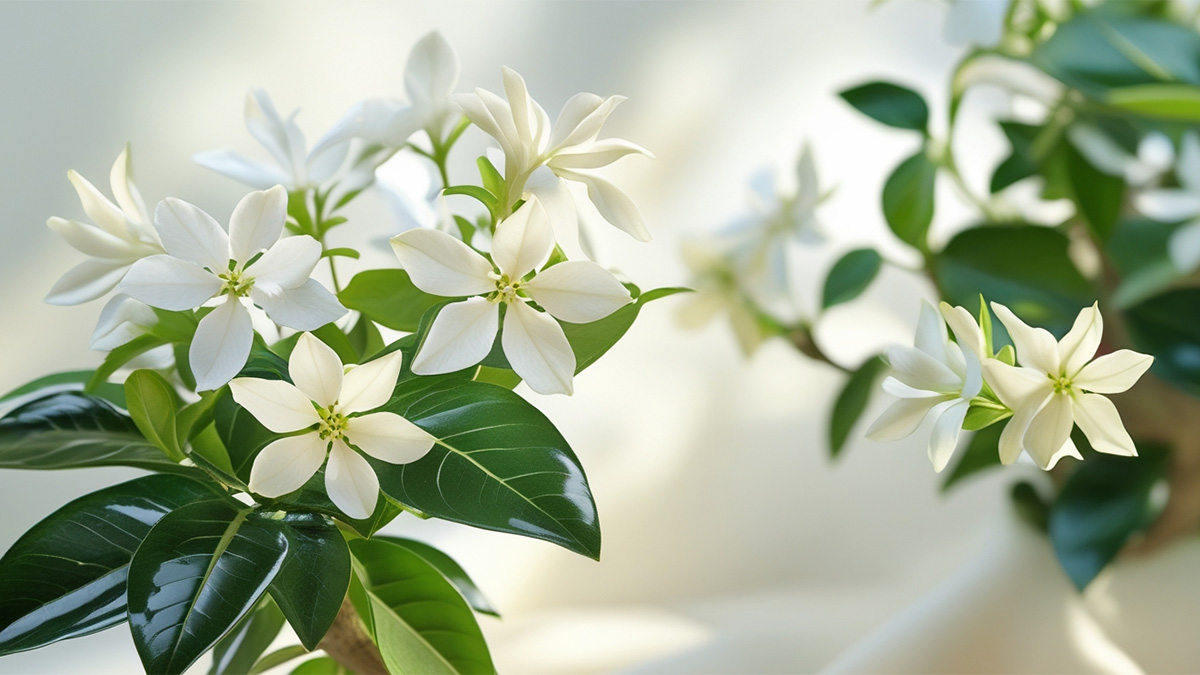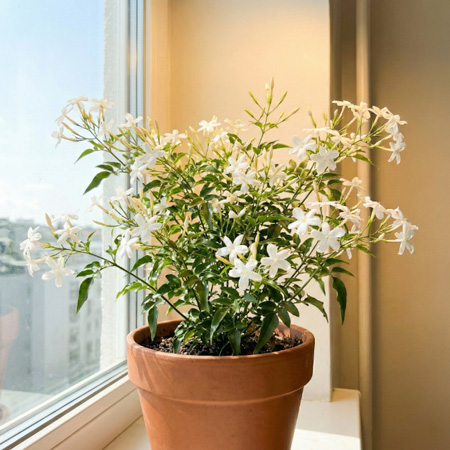Growing Jasmine Indoors for Stress Relief and its Aromatherapy Benefits

Jasmine is more than just a beautiful flowering plant; it’s also a natural source of calm. When grown indoors, jasmine not only adds beauty to your space but also provides a soothing fragrance that supports stress relief. In this guide, we’ll explore how to growing jasmine indoors can unlock its aromatherapy benefits for a healthier and more relaxing home.
Related: Fragrant Plants You Can Grow Indoors to Naturally Scent Your Home
Understanding jasmine and its aromatherapy qualities
Jasmine has long been valued for its fragrance and ornamental charm, but its role in aromatherapy makes it especially appealing as a houseplant. Popular indoor varieties like Jasminum sambac and Jasminum polyanthum are well known for their strong, swjeet scent. This fragrance is not only pleasant but has been linked to relaxation and stress reduction.
For centuries, jasmine has been used in essential oils, teas, and traditional remedies. Its aroma is believed to influence the nervous system by promoting calmness and easing tension. Scientific studies suggest jasmine’s scent may help lower anxiety and improve overall mood.
Why jasmine is perfect for stress relief

Scent plays a powerful role in mental health, and jasmine is one of the most effective plants for calming the mind. Inhaling its fragrance can promote a sense of peace, making it a useful natural tool for reducing stress. Many people place jasmine near relaxation spaces or bedrooms to enjoy its soothing qualities.
Compared with other aromatherapy plants like lavender, jasmine offers a stronger, more exotic fragrance. It is particularly effective for evening relaxation or meditation practices. Growing a jasmine plant indoors can help transform your home into a calming sanctuary.
Choosing the right jasmine for indoor growing
Not every jasmine variety thrives indoors, so choosing the right type is important. Jasminum sambac, also called Arabian jasmine, is prized for its fragrance and compact size, making it perfect for pots. Jasminum polyanthum, often called pink jasmine, grows quickly and blooms abundantly with a sweet scent.
Consider the plant’s bloom cycle when making your choice. Some jasmine varieties produce flowers in winter or spring, while others bloom in summer. Beginners may find sambac easiest to start with, as it adapts well to indoor environments.
How to grow jasmine indoors successfully
Although this fragrant climber has a reputation for being finicky, following these simple care guidelines will ensure your jasmine thrives indoors:
Location and light requirements

Jasmine prefers bright light and will grow best near a south- or west-facing window. If natural light is limited, a grow light can provide the extra brightness needed for blooming. Adequate sunlight helps encourage more flowers, which are the main source of the plant’s fragrance.
Soil and potting mix
The right soil mix is essential for healthy growth. Jasmine thrives in a rich, well-draining mix that combines potting soil with organic compost. Good drainage prevents root rot, while compost ensures steady nutrient availability.
Watering and humidity
Jasmine requires consistent moisture but does not like soggy soil. Water when the top inch of soil feels dry, and avoid letting water sit in the saucer. Higher humidity supports healthy leaves and blooms, so consider using a tray of water and pebbles or a room humidifier.
Fertilizing and pruning

Feed jasmine with a balanced liquid fertilizer every two to four weeks during active growth. Regular feeding encourages strong roots and abundant flowers. Prune after blooming to control size, encourage branching, and remove any weak or damaged stems.
Maximizing jasmine’s aromatherapy benefits indoors
To fully enjoy jasmine’s scent, place the plant in areas where you spend time relaxing. Bedrooms, living rooms, or meditation corners are ideal. The natural fragrance of jasmine blooms can gently fill a room and create a calming atmosphere without the need for candles or diffusers.
Encourage steady blooming by keeping the plant in bright light and maintaining consistent care. If you have extra flowers, they can be dried for sachets or infused into oils. Some gardeners also use fresh jasmine blooms in herbal teas, though only edible species should be used for this purpose.
Additional health and wellness benefits of jasmine
In addition to easing stress, jasmine may help improve mood and support better sleep. Its soothing aroma has been associated with lower heart rates and improved relaxation before bedtime. For people practicing meditation or yoga, jasmine can help create a deeper sense of calm and focus.
The plant’s uplifting fragrance can also contribute to emotional balance during the day. Many gardeners enjoy the simple act of caring for jasmine, finding the process itself therapeutic. Combined with its wellness benefits, jasmine offers both beauty and a sense of comfort indoors.
Troubleshooting common problems
Like any houseplant, jasmine may face challenges when grown indoors. Yellowing leaves often indicate overwatering or poor drainage. Lack of blooms is usually a result of insufficient light or missed fertilizing cycles.
Pests such as spider mites or aphids can occasionally appear, especially in dry environments. Regular misting, washing leaves, or applying insecticidal soap can resolve minor infestations. Paying attention to the plant’s environment helps prevent these issues before they start.
Frequently asked questions
Here are some frequently asked questions about growing jasmine indoors:
Can jasmine grow indoors year-round?
Yes, jasmine can grow indoors throughout the year with proper care. Adequate light, consistent watering, and humidity will keep it healthy even during winter.
How strong is the scent, and can it be overwhelming?
Jasmine has a rich and noticeable fragrance that some people find intense. Proper placement in a well-ventilated room helps balance the aroma without it becoming overpowering.
Is jasmine safe around pets and children?
Jasmine is generally non-toxic, but it is still wise to prevent pets or children from chewing on the leaves. Always verify the species you bring home, as some ornamental plants with similar names may differ in safety.
How long does jasmine bloom indoors?
Blooming periods vary by variety, but many indoor jasmines flower for several weeks at a time. With consistent care, you may enjoy multiple blooming cycles throughout the year.
Conclusion
Bringing jasmine indoors allows you to enjoy both its ornamental beauty and its therapeutic qualities. With proper care, your plant will reward you with fragrant blooms that enhance relaxation and support emotional wellbeing. If you’re looking for a natural way to add calm to your home, jasmine is a perfect choice for both your senses and your health.
